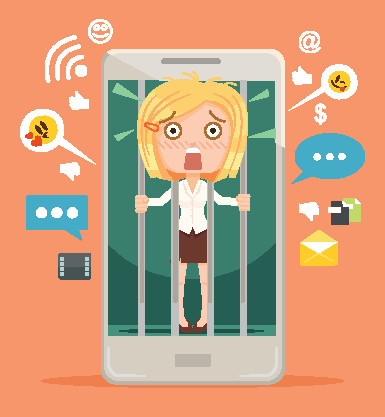I remember the days of local area network (LAN) parties, when my sons would wire up our rumpus room like a tech lab, with as many computers as they could find. They would invite like-minded friends, have good supply of chips and popcorn, and play computer games all night! Little did we know that there would be such a thing as computer addiction! Little did I expect my school students to complain of a computer or gaming addiction, and confess they were powerless to stop it.
Digital addiction, social media addiction, gaming addiction, internet compulsions and ‘Digital Cocaine’? What are these? Are they serious disorders? We have enough evidence to know technology addiction does exist, and it needs to be addressed. The negative consequences of the addiction can be far-reaching and devastating.
But there are so many positives about screentime as well:
Using technology to educate, such as watching a video, doing a tutorial or researching on the internet is invaluable for the workplace, teachers and students. Our phones keep us connected, keep our calendars up-to-date, check our physical fitness—the list is endless.
Social media and chat rooms such as Zoom which is a global video meeting for up to 1,000 participants: https://zoom.us/ provide us with continual connection and entertainment. Those with depression, ADHD, autism and anxiety can find technology helpful in improving self-esteem, for company and enjoyment. (However the time they spend on the device should still be monitored for excessive use).
What are some technology related addictions?
Did you know that technology devices have been likened to slot machines?
There are various internet addictions such as cybersex addiction, computer and gaming addiction, online relationship addiction and compulsive information seeking.
Dr G F Greenfield, Doctor in Psychology, from the Institute for Internet & Technology Addiction in West Hartford, Connecticut, states that the devices we use can be likened to slot machines. Our devices can give rewards in the form of information, messages or content in intermittent and unpredictable ways. When you get a reward, such as a notification, the neurochemical dopamine is released in the brain. The surprising fact is that the level of dopamine from the anticipated reward is twice as high as the actual reward. This can be habit-forming and become an addiction.
In this post we will start with a questionnaire to help to keep you be informed about the issue. Also:
What are some technology-related addictions?
How can they affect our lives?
What can we do about it?
Questionnaire:
How can you tell if someone has technology addiction?
Does the individual display:
- Loss of interest in any of the following due to technology use:
- social contact
- exercise
- work
- hobbies
- Depression, moodiness and irritabilty after spending time on a device?
- Large amounts of time spent regularly, (more than two and a half hours), alone on the device?
- Defensiveness if someone confronts them with their behaviour with the device?
- Do they prefer the device, to being in the company of other people?
- Is their education or employment suffering due to the amount of time spent on the internet/device?
- Are they obsessed with the world they’ve created around the device/activities?
If YES was answered to any of the above questions, seek help.

Some strategies that may alleviate the above symptoms:
- Create boundaries around the amount of time they use the device.
- Turn off as many notifications as possible. Notifications activate dopamine into the reward pathways in our brains.
- Screen time before bed can change ciradium rhythm which is the internal process that regulates our sleep-wake cycle, and disturbs normal sleep patterns.
- Try to limit screen time to two hours a day.
- Ban the phone at the dinner table and restaurants—unless taking photos of the occasion!
- Having a phone nearby increases stress levels. Checking and viewing the screens on phones more often than needed, may be the result of trying to reduce the stress level.
- Find diversions and other ways to spend time, release your emotions, physical exercise, meditation.
- Parents: model the behaviour that you want your child to have. If you demonstrate poor habits with technology—they will think it’s OK for them!
You can install apps to help your child/teen to help monitor the amount of time they are spending on their device. Because you can use the boundaries and app calculations it makes the app the messenger and not you—which can help defuse anger. Some recommended apps are: FamiSafe, Screen Time Parental Control, Zift and Qustodio Parental Control. Check out what they offer first.
Some consequences of too much screen time:
- Physical health decline: eyesight problems, back and posture problems, overuse injuries, (such as ganglia of the wrist), weight loss or gain and premature aging.
- Reduced academic performance.
- Detrimental effects on, or loss of employment.
- Family strain and breakdown
- Lack of social interaction, relationships and friends. Normal social bonding may be replaced with shallow friendships.
- Lack of sleep and/or poor sleep quality.
- Serious depression
Wrap-up:
The dilemma of technology addiction is a relatively new phenomena and health professionals believe that it needs further research. However it is clear the addiction can interfere with everyday life, work, education and relationships, once the behaviour becomes compulsive.
Reference: www.drdavidgreenfield.com
Watch the HouseSmarts KidSmarts Tech Addiction Epidemic video for more information:
https://virtual-addiction.com/

 Curb the cravings during COVID 19
Curb the cravings during COVID 19